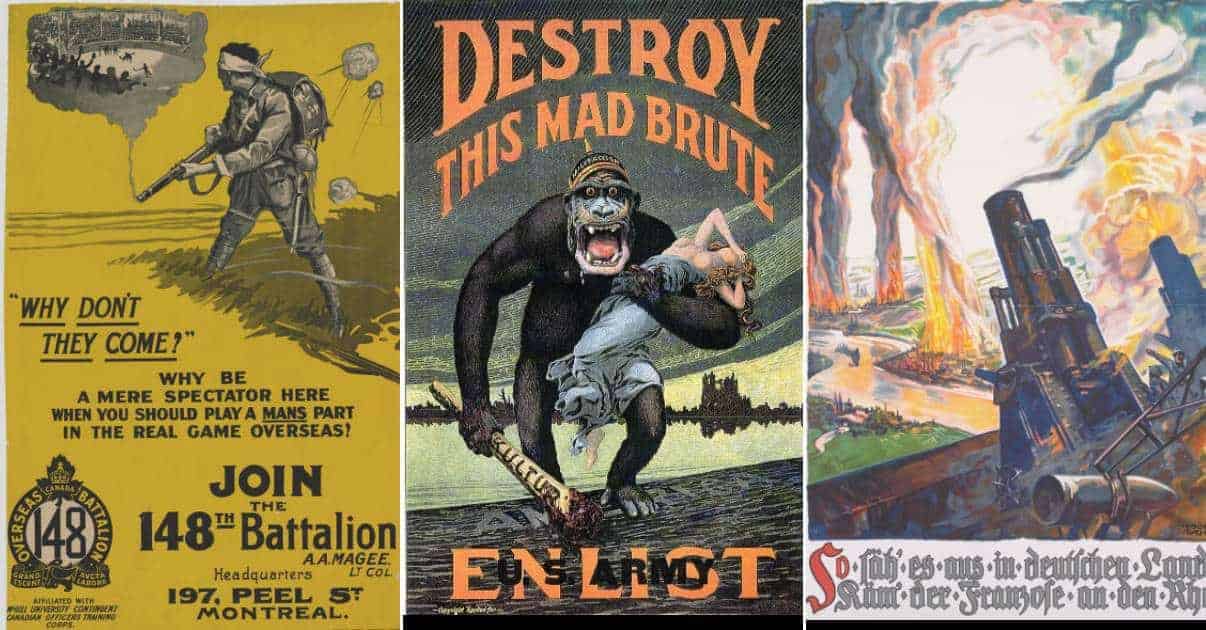When it came to the first great war of the 20th century, people were scared and many did not want to get involved. In the United States ,people did not know why they should get involved with a war that was on the other side of the world. Even in Germany it was hard to rally people to join the war effort and fight. But that was where propaganda came in. World War I produced such stunning propaganda posters that they continue to hang in homes and art museums to this day. They also helped rally people to fight for their countries.

The Hun and the Home
When it became clear to the British government that war was happening, propaganda was one of the first orders of business. A war always needed men on the front and women at home to support the war effort in any way possible. To do this, Wellington House was established in 1914 and was responsible for propaganda about German activities until 1915. There was a lack of coordination between the various departments responsible for propaganda, so the Foreign Office was created in 1916.
In 1917 propaganda was still not as strong as it needed to be so Lloyd George created the Department of State to handle propaganda. Problems still existed and so finally the Ministry of Information was created in 1918 and handled propaganda until a few weeks after the war. Once the Ministry of Information was dissolved, anything left of the propaganda department went back to the Foreign Office.
This poster was printed in 1914 and it served the same purpose as many American propaganda posters would. The war in Belgium seemed far away for the people of Britain. Therefore, initial propaganda focused on British loyalty to Belgium and the suffering of her people. This poster refers to the Germans as Huns, and acknowledges the difference between the current lives of the people in Britain and the people in Belgium.
The poster shows that British women and children are safe and their homes intact. It contrasts it with a Belgium where women are murdered or worse, children are dead or slaves. The poster gives the sense that Belgium tried to remain neutral and is now suffering. Britain was the guarantor of that neutrality and it now becomes the duty of Britain to rise up and protect themselves and their Belgian brothers.

